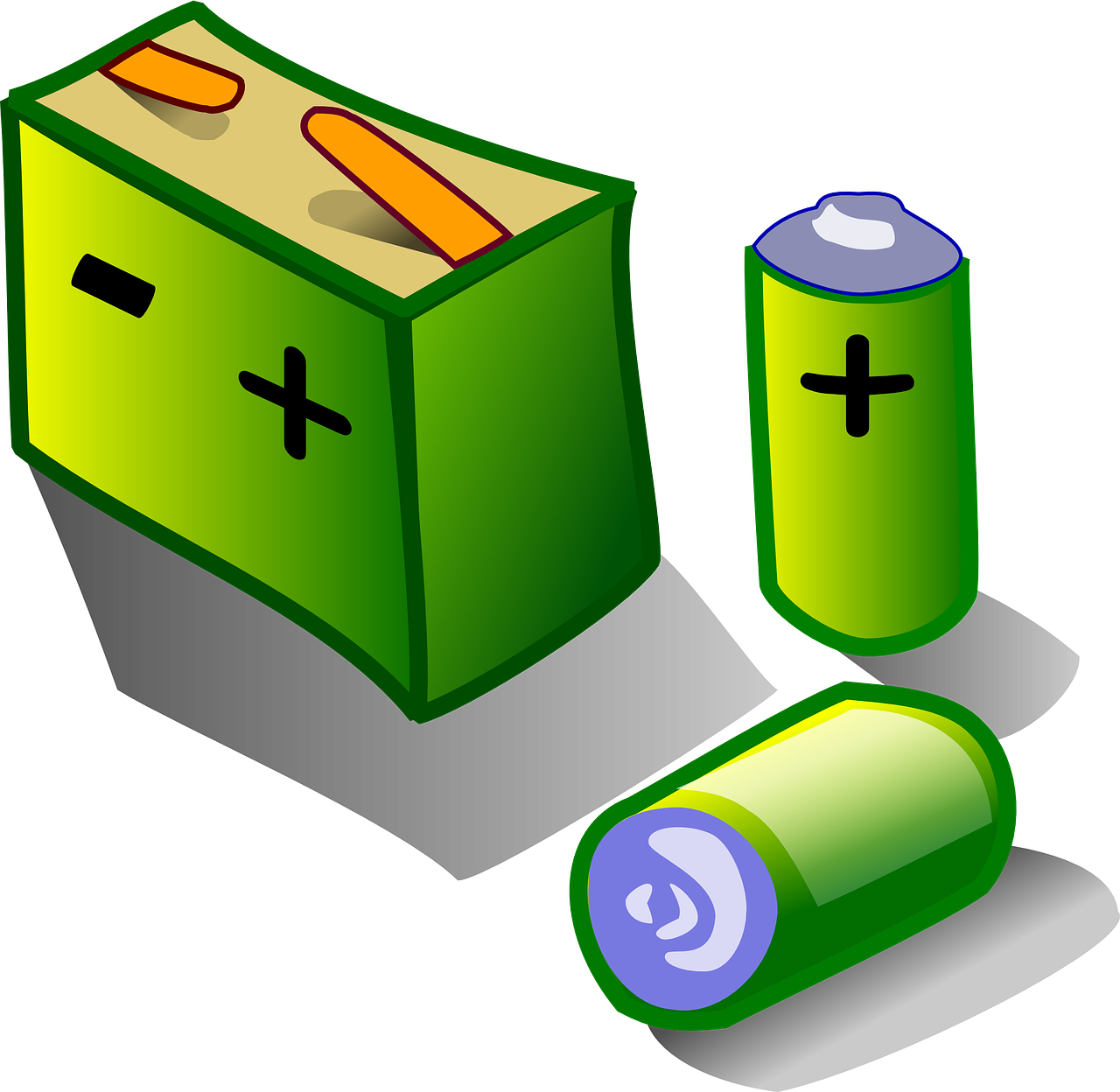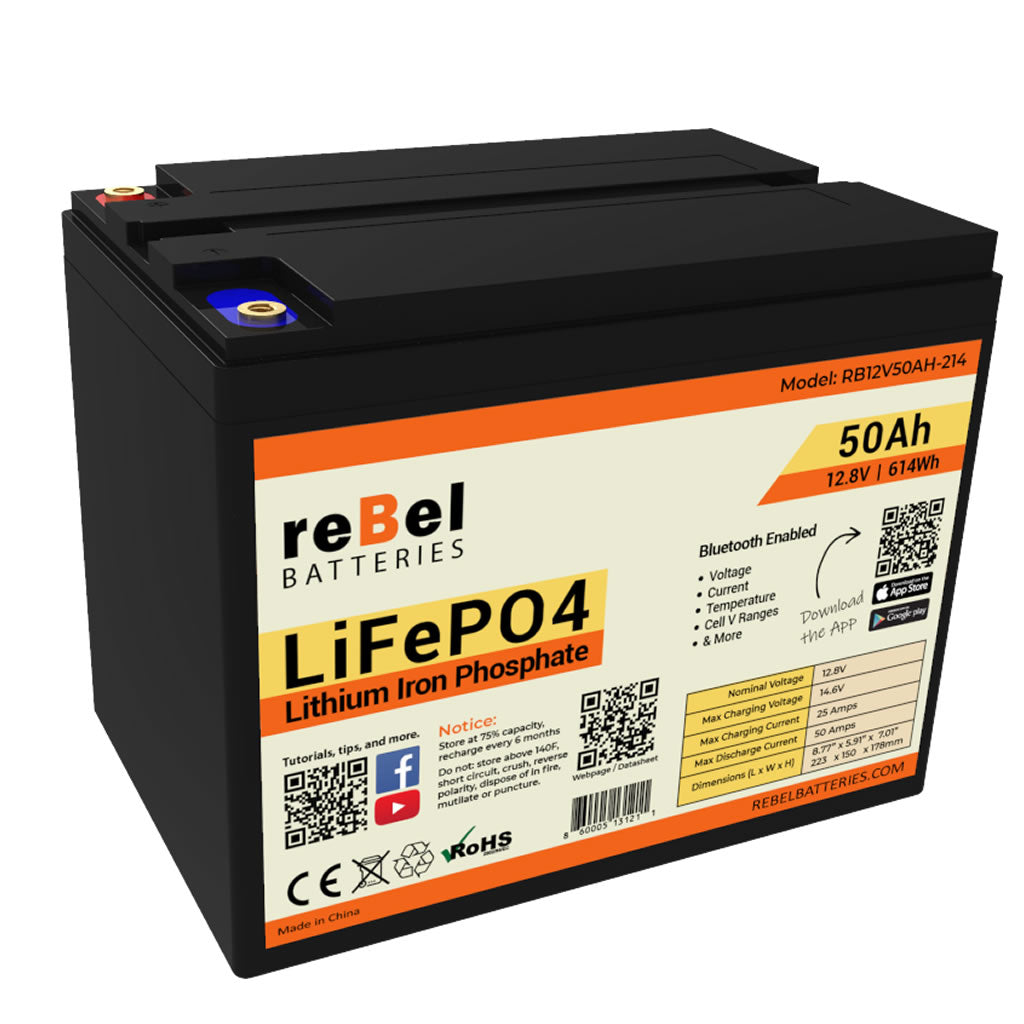Are Lithium Iron Phosphate batteries really that much better for 12V applications than NMC and Lithium polymer batteries are?
Yes. Aside from being safer and capable of lasting hundreds sometimes thousands of cycles longer, their voltage and flat discharge curve makes Lithium Iron Phosphate batteries ideal for 12V use. While Lithium NMC and Lithium Polymer batteries will provide high current right up to the end of their cycle, their cell voltage is the first thing that makes them a bad choice for 12V use.
A configuration of Lithium Iron Phosphate for 12V gives you 12.8V which is perfect. Using four Lithium Polymer cells on the other hand gives you a voltage of over 15V which can damage most 12V products. Using Lithium NMC cells you can end up with around 12.5V but their discharge curve makes them undesirable for 12V because you can’t use much of their capacity above 12V. Even if you have 12V products that can stand over 15V the discharge curve of Lithium Polymer cells also makes them a bad choice for 12V use. They work in jump starters because the high current draw pulls the voltage down and it isn’t needed for more than a few seconds. Some jump starters use a configuration that comes out to a little over 11V which still works because the starter still ends up with about the same voltage it would get from a Led Acid Battery.
Here is a 4A discharge test I did on all three types of Lithium Batteries. I only ran the test for 20 minutes because that was long enough to prove the point.
First up the NMC battery was a 40AH battery in a solar generator. The test was started right after taking the unit off the charger. The voltage was 12.45V. When the test was started the voltage dropped to 11.9V dropping the current to 3.7A.
In twenty minutes the voltage was11.83V. While it would have carried the load for several hours the voltage would have continued sagging. Considering the small current draw against the capacity this battery has that was a large drop in voltage for such a short time. If the battery had been a 5AH battery it would have been well below 12V. Inverters still work below 12V so for this application an NMC battery works but not well for the 12V accessory feature.
The next battery was a 2.9AH Lithium Iron Phosphate battery in a jump starter that had been sitting for a month since it was charged. It was given the least advantage considering the time it sat and that this test was over a 1C draw.
When the test was started the voltage stabilized at 12.26V.
After twenty minutes the voltage was 12.15V and was still dropping very slowly. I could have easily gone another fifteen or twenty minutes. If it had been a 3AH NMC or Lithium Polymer battery it would have been down to an unusable voltage for 12V at this point.
Moving on, the lithium Polymer battery was a 4AH battery in a jump starter. Because of the higher voltage, the current was 4.3A.
When the test started the voltage stabilized at 15.29V.
After 20 minutes the voltage was 14.03V.
As you can see there was quite a voltage drop. It could have gone all the way to 12.4V before it would have turned off.
To be fair I also ran this test on another Lithium Iron Phosphate battery that was fully charged and let sit for a day. This time I used the 6AH battery from reBel Batteries.
When the test started the voltage settled at 12.68V.
In twenty minutes the voltage was 12.64V. That’s less than the voltage dropped on the large NMC battery carrying less current.
As you can see the tests speak for themselves. Lithium Iron Phosphate Batteries are the best kind to use for 12V applications.
Yes. Aside from being safer and capable of lasting hundreds sometimes thousands of cycles longer, their voltage and flat discharge curve makes Lithium Iron Phosphate batteries ideal for 12V use. While Lithium NMC and Lithium Polymer batteries will provide high current right up to the end of their cycle, their cell voltage is the first thing that makes them a bad choice for 12V use.
A configuration of Lithium Iron Phosphate for 12V gives you 12.8V which is perfect. Using four Lithium Polymer cells on the other hand gives you a voltage of over 15V which can damage most 12V products. Using Lithium NMC cells you can end up with around 12.5V but their discharge curve makes them undesirable for 12V because you can’t use much of their capacity above 12V. Even if you have 12V products that can stand over 15V the discharge curve of Lithium Polymer cells also makes them a bad choice for 12V use. They work in jump starters because the high current draw pulls the voltage down and it isn’t needed for more than a few seconds. Some jump starters use a configuration that comes out to a little over 11V which still works because the starter still ends up with about the same voltage it would get from a Led Acid Battery.
Here is a 4A discharge test I did on all three types of Lithium Batteries. I only ran the test for 20 minutes because that was long enough to prove the point.
First up the NMC battery was a 40AH battery in a solar generator. The test was started right after taking the unit off the charger. The voltage was 12.45V. When the test was started the voltage dropped to 11.9V dropping the current to 3.7A.
In twenty minutes the voltage was11.83V. While it would have carried the load for several hours the voltage would have continued sagging. Considering the small current draw against the capacity this battery has that was a large drop in voltage for such a short time. If the battery had been a 5AH battery it would have been well below 12V. Inverters still work below 12V so for this application an NMC battery works but not well for the 12V accessory feature.
The next battery was a 2.9AH Lithium Iron Phosphate battery in a jump starter that had been sitting for a month since it was charged. It was given the least advantage considering the time it sat and that this test was over a 1C draw.
When the test was started the voltage stabilized at 12.26V.
After twenty minutes the voltage was 12.15V and was still dropping very slowly. I could have easily gone another fifteen or twenty minutes. If it had been a 3AH NMC or Lithium Polymer battery it would have been down to an unusable voltage for 12V at this point.
Moving on, the lithium Polymer battery was a 4AH battery in a jump starter. Because of the higher voltage, the current was 4.3A.
When the test started the voltage stabilized at 15.29V.
After 20 minutes the voltage was 14.03V.
As you can see there was quite a voltage drop. It could have gone all the way to 12.4V before it would have turned off.
To be fair I also ran this test on another Lithium Iron Phosphate battery that was fully charged and let sit for a day. This time I used the 6AH battery from reBel Batteries.
When the test started the voltage settled at 12.68V.
In twenty minutes the voltage was 12.64V. That’s less than the voltage dropped on the large NMC battery carrying less current.
As you can see the tests speak for themselves. Lithium Iron Phosphate Batteries are the best kind to use for 12V applications.


